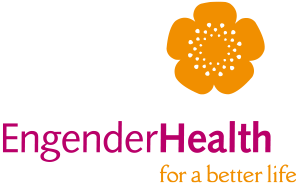This post originally appeared on the Maternal Health Task Force blog. By: Kayla McGowan, Project Coordinator, Women and Health Initiative, Harvard T.H. Chan School of Public Health
 Last week, experts in maternal health convened at the Wilson Center to mark the recent launch of The Lancet Maternal Health Series, discuss its implications and brainstorm how to translate findings into improvements for global maternal newborn health. The dialogue, What Next? Putting The Lancet Maternal Health Series Into Action, was part of the Maternal Health Task Force’s Advancing Policy Dialogue on Maternal Health Seriesin partnership with UNFPA and the Wilson Center. Panelists included authors of the series as well as leaders in maternal health policy, advocacy and practice.
Last week, experts in maternal health convened at the Wilson Center to mark the recent launch of The Lancet Maternal Health Series, discuss its implications and brainstorm how to translate findings into improvements for global maternal newborn health. The dialogue, What Next? Putting The Lancet Maternal Health Series Into Action, was part of the Maternal Health Task Force’s Advancing Policy Dialogue on Maternal Health Seriesin partnership with UNFPA and the Wilson Center. Panelists included authors of the series as well as leaders in maternal health policy, advocacy and practice.
Lynn Freedman, event moderator and Director of the Averting Maternal Death and Disability Program (AMDD) and Professor of Clinical Population and Family Health at Columbia University’s Mailman School of Public Health, opened the discussion by stating that the series proposes a vision of maternal health for the next era: Every woman, every newborn, everywhere has the right to good quality care. To achieve this imperative, the speakers called for the following five actions:
Address diversity and divergence of maternal health.
While global maternal deaths have decreased in the last quarter century, maternal deaths due to a wide range of indirect causes – ranging from asthma to obesity – have increased, which represents the growing diversity in maternal health. Furthermore, the burden of poor maternal health is far from equally distributed, which indicates increasing divergence. As Clara Calvert, Assistant Professor at the London School of Hygiene and Tropical Medicine, identified, as of 2013, the pooled maternal mortality ratio (MMR) for the 10 countries with the highest levels is 200 times greater than the ratio for the 10 countries with the lowest MMRs. To improve maternal health for every woman everywhere, we must address the range of underlying causes of maternal morbidity and mortality (diversity) as well as the disparities among and within populations (divergence).
Reach vulnerable women in all contexts.
One of the key takeaways from the series is the “too little, too late and too much, too soon” framework, which outlines two extremes in maternal health: ‘Too little, too late’ is absent, delayed or inadequate care often linked to insufficient resources such as staff, supplies, medicines or training; ‘Too much, too soon’ represents medicalization of pregnancy and childbirth that often results in unnecessary interventions. As Suellen Miller, Director of the Safe Motherhood Program and Professor in the Department of Obstetrics, Gynecology and Reproductive Health Sciences at the University of California, San Francisco, explained, we often associate maternal health care that is ‘too little, too late’ with low-income settings, but women in all settings are susceptible to receiving inadequate care. As Suellen highlighted,
“Vulnerable women exist in every country… What we found is that ‘too little, too late’ also exists in high-income countries, middle-income countries and anywhere there is diversity, vulnerable women or marginalized populations.”
Similarly, while the practice of ‘too much, too soon’ is considered an issue in high-income areas, over-medicalization of childbirth is a growing problem in middle-income countries as well. In fact, the world’s highest cesarean rate is in the Dominican Republic (58.9%), followed by Brazil (56.7%) and Egypt (51.8%).
Prioritize quality, equity, resilience, financing and local evidence.
As Marge Koblinsky, Independent Consultant, Maternal and Child Health, explained, the global maternal health community must come together to respond to the series’ call to action. This means ensuring high quality maternity care, promoting equity through universal health coverage of maternal health services, strengthening health systems, guaranteeing sustainable financing related to maternal and perinatal health and increasing the accessibility and use of local data. As Laurel Hatt, Health Finance Lead at Abt Associates, emphasized, “We need to shift the paradigm and focus on how better quality actually promotes better efficiency; investing in poor quality is the biggest waste of money.”
Engage more deeply at the local level.
According to Kathleen Hill, Maternal Health Lead, Maternal Child Survival Program, “If we want a system that delivers the right care for every woman, every time, [we must prioritize] the performance of a local system.” While focusing on targets and metrics related to global maternal health is immensely important, we cannot neglect the local actors on the ground. We must work with providers at the district and community levels and develop strategies to improve adherence to evidence-based guidelines and measure progress in context-appropriate ways.
Put women at the center of their own care.
Improvements in maternal health begin with listening to the women who receive care. As Elena Ateva, Maternal and Newborn Health Policy and Advocacy Advisor at the White Ribbon Alliance advised, we must ask women how they experience care and what they would recommend for improvements. According to Elena, “When we do this, the most amazing thing happens – these women become their own advocates!” Elena relayed stories of women who faced challenges, including lack of privacy and accessibility, while delivering in health facilities in Uganda. As Elena stated, “The voices of women, families and communities must be the starting point, not the afterthought, when we prioritize efforts at the local or national level.”
Missed the dialogue?
- View the webcast
- Read more from The Lancet Maternal Health Series on the MHTF blog
- Access resources from The Lancet Maternal Health Series
Check out the social media discussion below and join the conversation using #MHDialogueand #MaternalHealthNow.


